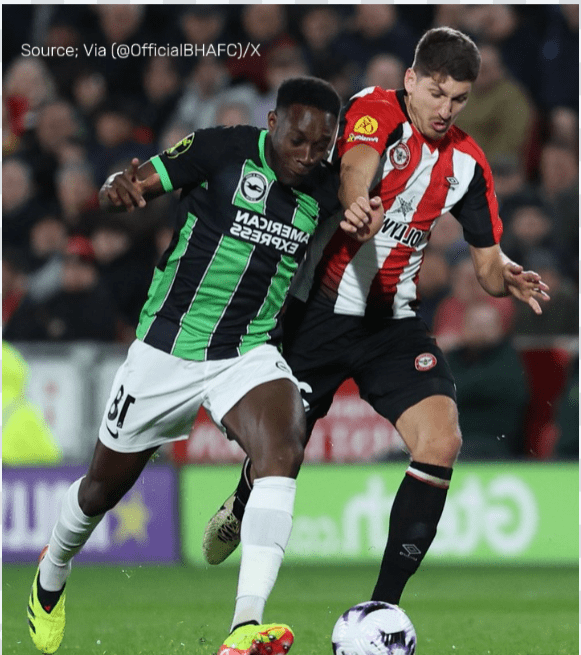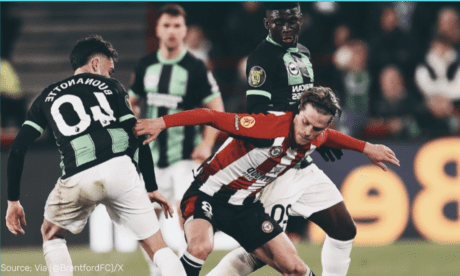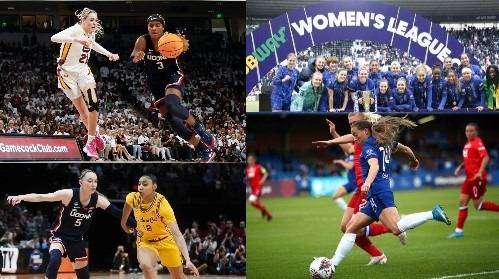Brentford and Brighton Tactical Battle Unfolds
The opening half of the match between Albion and Brentford was characterized by a tightly contested midfield battle and cautious play from both sides. Brentford showed intent early on, pressing high and looking to create chances through quick transitions. However, Brighton’s organized defensive structure thwarted most of the Bees attacking moves, with Mathias Jensen and Yoane Wissa often finding themselves stifled by Brighton’s resilient defense.
On the other hand, Albion demonstrated their trademark possession-based style, patiently building up from the back and looking to exploit spaces in Brentford’s defense. Players like Pascal Groß and Adam Lallana attempted to unlock Brentford’s defense with their incisive passing, but Brentford’s backline, led by Zanka and Kristoffer Ajer, held firm and denied Brighton any clear-cut opportunities. Despite some promising moments from both sides, neither team managed to break the deadlock, and the first half ended with the scoreline remaining goalless.
Key Moments and Missed Opportunities
Throughout the first half, there were several key moments and missed opportunities that could have altered the course of the game. Brentford’s Yoane Wissa came close to opening the scoring with a left-footed shot from the center of the box, only to see his effort drift wide of the target. Brighton’s João Pedro also had a chance to put his team ahead with a header, but his effort narrowly missed the top right corner.
Both teams exchanged shots on goal, with the Bees Ivan Toney and Brighton’s Facundo Buonanotte testing the opposition goalkeepers with their attempts from outside the box. However, Mark Flekken for Brentford and Lewis Dunk for Brighton stood tall and made crucial saves to keep the scores level. The half ended with Brentford’s Zanka seeing his header saved by the Brighton goalkeeper, ensuring that neither team could capitalize on their opportunities in the first 45 minutes.
Defensive Resilience and Set Piece Threat
Defensive resilience was a notable feature of the first half, with both teams showcasing their solidity at the back. Brentford’s backline remained organized and disciplined, denying Brighton’s attackers space in the final third. Meanwhile, Brighton’s defense, marshaled by Lewis Dunk and Joël Veltman, stood firm against Brentford’s attacking threats, ensuring that their goal remained unbreached.

Set pieces emerged as potential avenues for both teams to find a breakthrough, with corners and free kicks providing opportunities to test the opposition defenses. However, despite some dangerous deliveries into the box, neither team could convert their set piece chances into goals. As the halftime whistle blew, it became evident that the second half would likely see a continuation of the tactical battle between Brentford and Brighton as both teams sought to gain the upper hand in the encounter.
Intensity Without Reward
The second half of the the Bees versus Brighton and Hove Albion match continued with the same intensity as the first, with both teams striving to break the deadlock. Brighton started brightly, with Joël Veltman and João Pedro coming close to finding the back of the net early on. However, Brentford’s defense held firm, led by the likes of Nathan Collins and Kristoffer Ajer, ensuring that Brighton’s attacks were repelled.
As the half progressed, the game became more open, with both teams committing fouls in dangerous areas as they sought to gain the upper hand. Brighton’s Facundo Buonanotte received a yellow card for a rash challenge, while Brentford‘s Vitaly Janelt also found himself booked for a similar offense. Despite some promising moments, including a missed opportunity by Julio Enciso for Brighton and Hove Albion and a blocked shot from Bryan Mbeumo for the Bees, neither side could find the breakthrough they desperately sought.
Tactical Changes and Substitutions
Both managers made strategic changes during the second half in an attempt to tilt the balance in their favor. Brentford introduced fresh legs in the form of Bryan Mbeumo and Sergio Reguilón, hoping to inject pace and creativity into their attacking play. On the other hand, Brighton made substitutions of their own, bringing on Jakub Moder and Danny Welbeck to provide additional attacking impetus.
However, despite these alterations, neither team could find a way past the opposition defense. Brentford‘s Ivan Toney came close with a free kick that sailed high and wide, while Brighton’s Igor Julio failed to hit the target with his long-range effort. As the final whistle blew, both teams were left frustrated by their inability to convert chances into goals, resulting in a hard-fought but ultimately goalless draw.
Defensive Masterclass and Missed Opportunities
The second half showcased a defensive masterclass from both Brentford and Brighton and Hove Albion, with solid defensive structures denying the opposition any clear-cut opportunities. Brentford’s backline remained resolute, with Mark Flekken making crucial saves whenever called upon. Similarly, Brighton’s defense stood firm, with Lewis Dunk and Joël Veltman leading by example and thwarting Brentford’s attacking forays.
Despite their defensive solidity, there were moments where both teams could have capitalized on defensive lapses. Brighton’s Julio Enciso and Brentford’s Bryan Mbeumo had chances to snatch a late winner for their respective teams, but their efforts were either off target or blocked by resilient defending. As the final whistle signaled the end of the match, it became evident that while both teams showcased defensive resilience, they would need to be more clinical in front of goal if they were to secure victory in future encounters.
Table of Contents
Discover more from OGM News NG
Subscribe to get the latest posts sent to your email.














